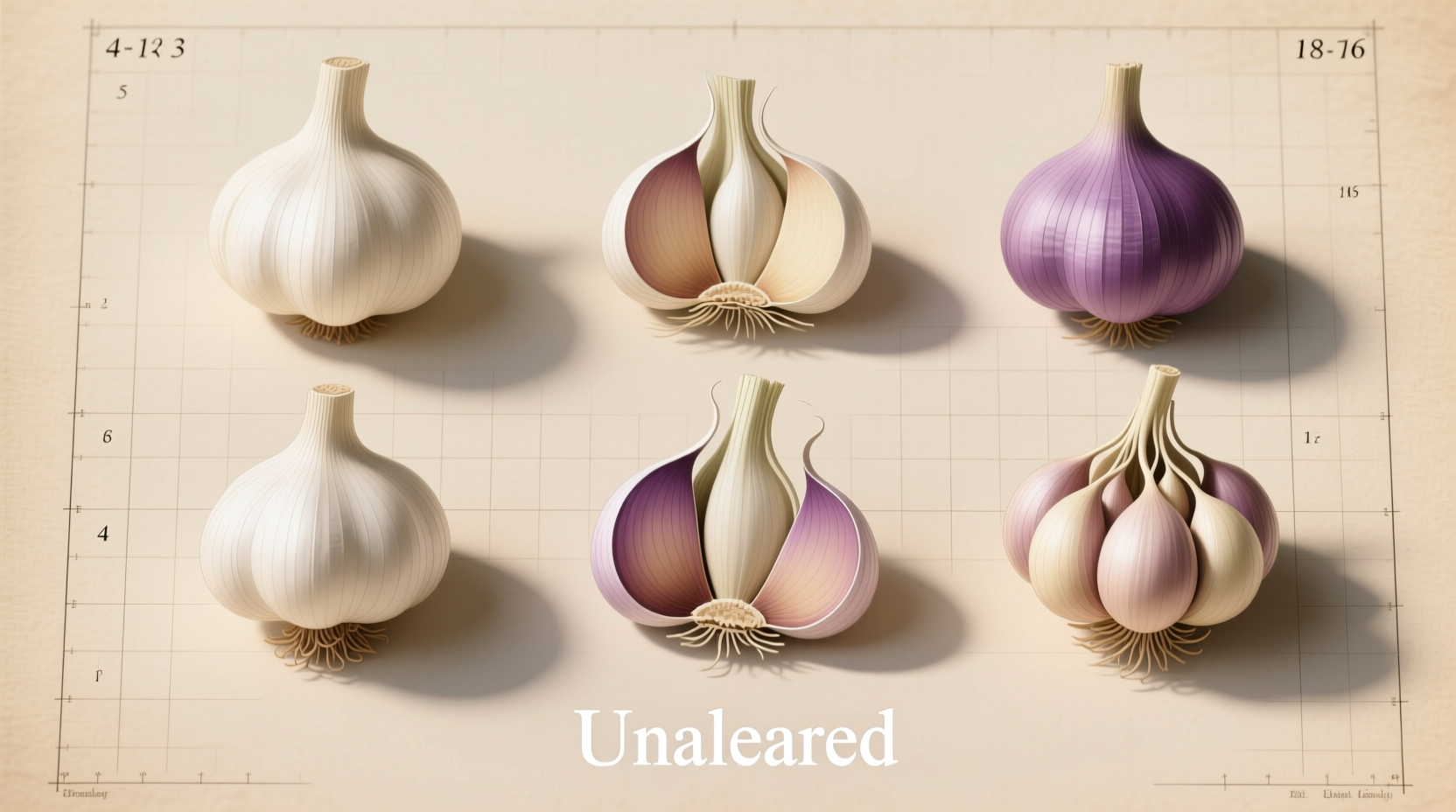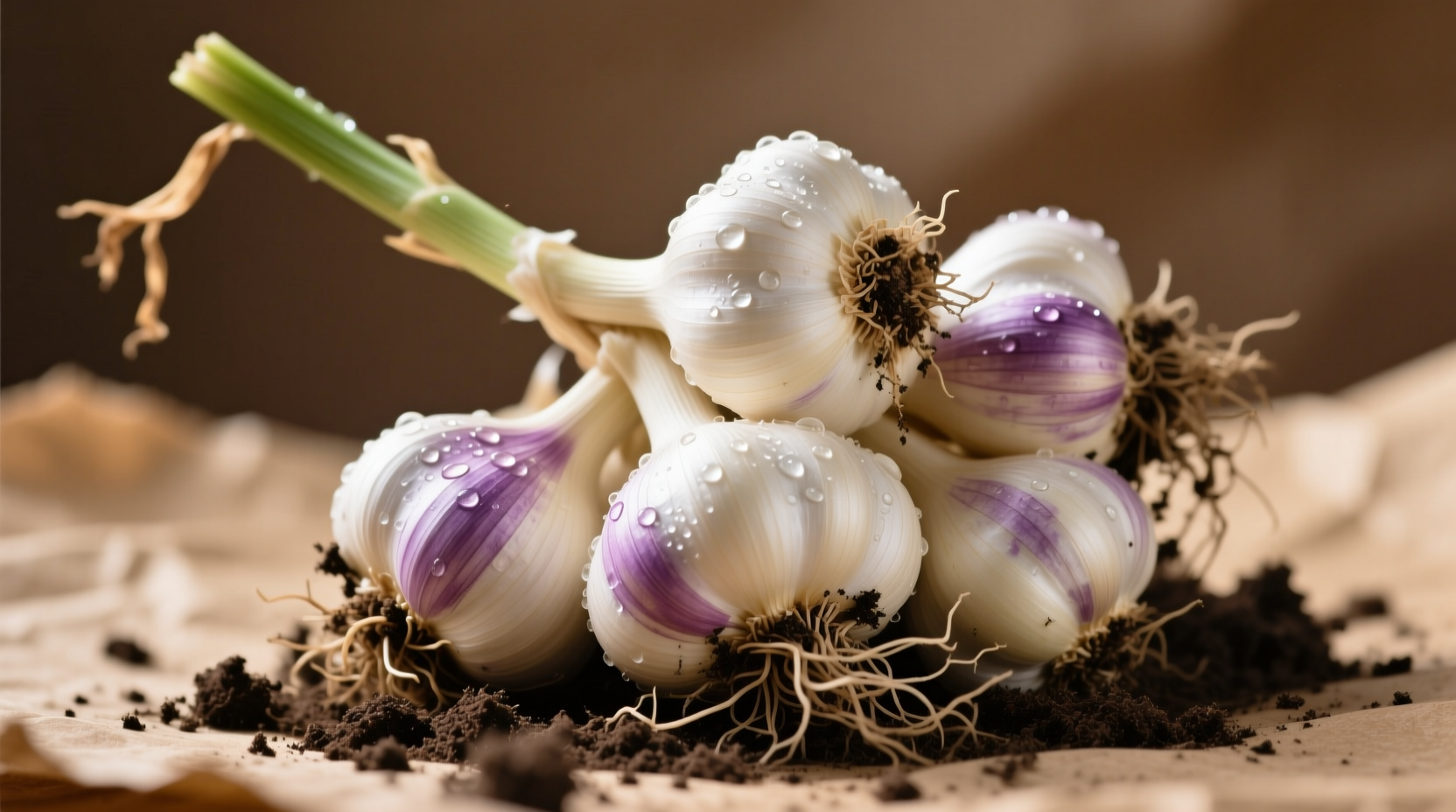A typical head of garlic contains 10-12 cloves, though this varies by variety—Silverskin types may have 16-20 small cloves while Porcelain varieties offer 4-6 large ones. Properly stored, whole garlic heads maintain peak flavor for 3-5 months in cool, dark conditions.
Ever stood in the grocery aisle wondering how many cloves you'll actually get from that bulb? Or why your roasted garlic turns bitter instead of sweet? Understanding heads of garlic transforms your cooking from guesswork to precision. This guide reveals exactly what determines clove count, how to select bulbs that deliver maximum flavor, and professional techniques for unlocking garlic's full potential—whether you're making aioli, roasting whole heads, or preserving your harvest.
What Exactly Is a Head of Garlic?
Before we dive into clove counts, let's clarify terminology. A head of garlic (also called a bulb) is the entire rounded unit you purchase, composed of multiple individual segments wrapped in papery skin. Each segment is a clove—the smaller, individually wrapped portions you separate for cooking. The number of cloves per head directly impacts recipe scaling and flavor intensity.

How Many Cloves Per Head? The Complete Breakdown
The clove count in a head of garlic depends primarily on variety, growing conditions, and bulb maturity. Here's what commercial growers and chefs consistently observe:
| Garlic Variety | Typical Clove Count | Clove Size | Best Culinary Uses |
|---|---|---|---|
| Silverskin (Artichoke) | 16-20 cloves | Small | Everyday cooking, pickling, long-term storage |
| Porcelain | 4-6 cloves | Large | Roasting whole, bold flavor applications |
| Rocambole | 10-12 cloves | Medium | Balanced flavor for sauces and dressings |
| Elephant (not true garlic) | 4-6 cloves | Very large | Mild applications, easy peeling |
Selecting Heads of Garlic That Deliver Maximum Flavor
Not all bulbs perform equally in the kitchen. Follow these professional selection criteria used by chefs to ensure peak quality:
Visual Inspection Checklist
- Firmness test: Squeeze gently—no soft spots or give (indicates sprouting or decay)
- Skin integrity: Tight, dry papery covering without mold or excessive dirt
- Stem condition: Cut stem should be dry, not moist or green
- Size consistency: Larger bulbs don't mean more flavor—medium heads often have better clove-to-skin ratio
According to USDA agricultural research, garlic bulbs harvested at optimal maturity (when 50% of lower leaves yellow) develop the most complex flavor compounds. Bulbs harvested too early lack depth, while overripe garlic separates easily but loses pungency.
Proper Storage: Making Your Heads of Garlic Last
Mistaken storage methods cause 30% of home garlic to spoil prematurely. Follow these evidence-based storage techniques:
Storage Method Comparison
- Room temperature (60-65°F): 3-5 months in mesh bags with airflow (ideal for whole heads)
- Refrigeration: Maximum 1 week—causes sprouting when returned to room temperature
- Freezing whole heads: Not recommended—alters cellular structure and flavor profile
- Oil preservation: Risk of botulism—only do this with refrigeration and immediate use
The National Center for Home Food Preservation confirms that garlic stored in cool, dark conditions with 60-70% humidity maintains both flavor compounds and nutritional value longest. Avoid plastic bags—they trap moisture and accelerate spoilage.
Unlocking Flavor: Professional Techniques for Using Whole Heads
How you handle heads of garlic dramatically impacts flavor development. Here's what culinary science reveals:
Flavor Transformation Timeline
When you crush or chop garlic, an enzyme (alliinase) converts alliin to allicin—the compound responsible for garlic's characteristic aroma and health benefits. This reaction follows a precise timeline:
- 0-10 seconds after cutting: Minimal flavor development
- 45-60 seconds: Peak allicin production (maximum pungency)
- 5+ minutes: Allicin breaks down into milder compounds
- 10+ minutes with heat: Sulfur compounds transform into sweet, nutty flavors
This explains why recipes instruct to let minced garlic rest before cooking—it maximizes flavor development. For roasted whole heads, the slow application of heat creates entirely different compounds through the Maillard reaction.
Perfect Roasted Garlic: A Step-by-Step Guide
Roasting whole heads of garlic transforms sharp pungency into sweet, spreadable goodness. Follow this chef-approved method:
- Cut 1/4 inch off the top of the head to expose cloves
- Drizzle with 1 tsp olive oil, ensuring oil penetrates between cloves
- Season with salt and optional herbs (rosemary works beautifully)
- Wrap tightly in foil with the cut side up
- Bake at 400°F for 45-55 minutes until cloves are golden and tender
The key is maintaining moisture while allowing slow caramelization. According to research published in the Journal of Agricultural and Food Chemistry, roasting garlic above 350°F for 45+ minutes converts harsh sulfur compounds into sweet, buttery notes while preserving beneficial antioxidants.
Common Heads of Garlic Mistakes to Avoid
Even experienced cooks make these critical errors that compromise flavor:
- Storing garlic with onions: Causes both to spoil faster due to moisture exchange
- Using sprouted garlic without removing green shoots: Bitter flavor dominates dishes
- Adding garlic too early in high-heat cooking: Burns easily (smoke point 325°F)
- Washing before storage: Introduces moisture that promotes mold
Food safety experts at the FDA emphasize that properly stored whole garlic heads present virtually no food safety risks. However, once cloves are separated, use within 10 days to prevent potential botulinum growth in low-acid environments.
When Heads of Garlic Go Bad: Safety Guidelines
Recognizing spoilage prevents food waste while ensuring safety. Discard bulbs showing:
- Dark green or black mold between cloves
- Soft, mushy texture when squeezed
- Strong ammonia-like odor (indicates advanced decomposition)
- Excessive sprouting with hollow, dry cloves
Minor sprouting (small green shoots) is safe—simply remove the green germ before use. The University of California Cooperative Extension confirms that sprouted garlic remains nutritionally valuable, though slightly more bitter.











 浙公网安备
33010002000092号
浙公网安备
33010002000092号 浙B2-20120091-4
浙B2-20120091-4